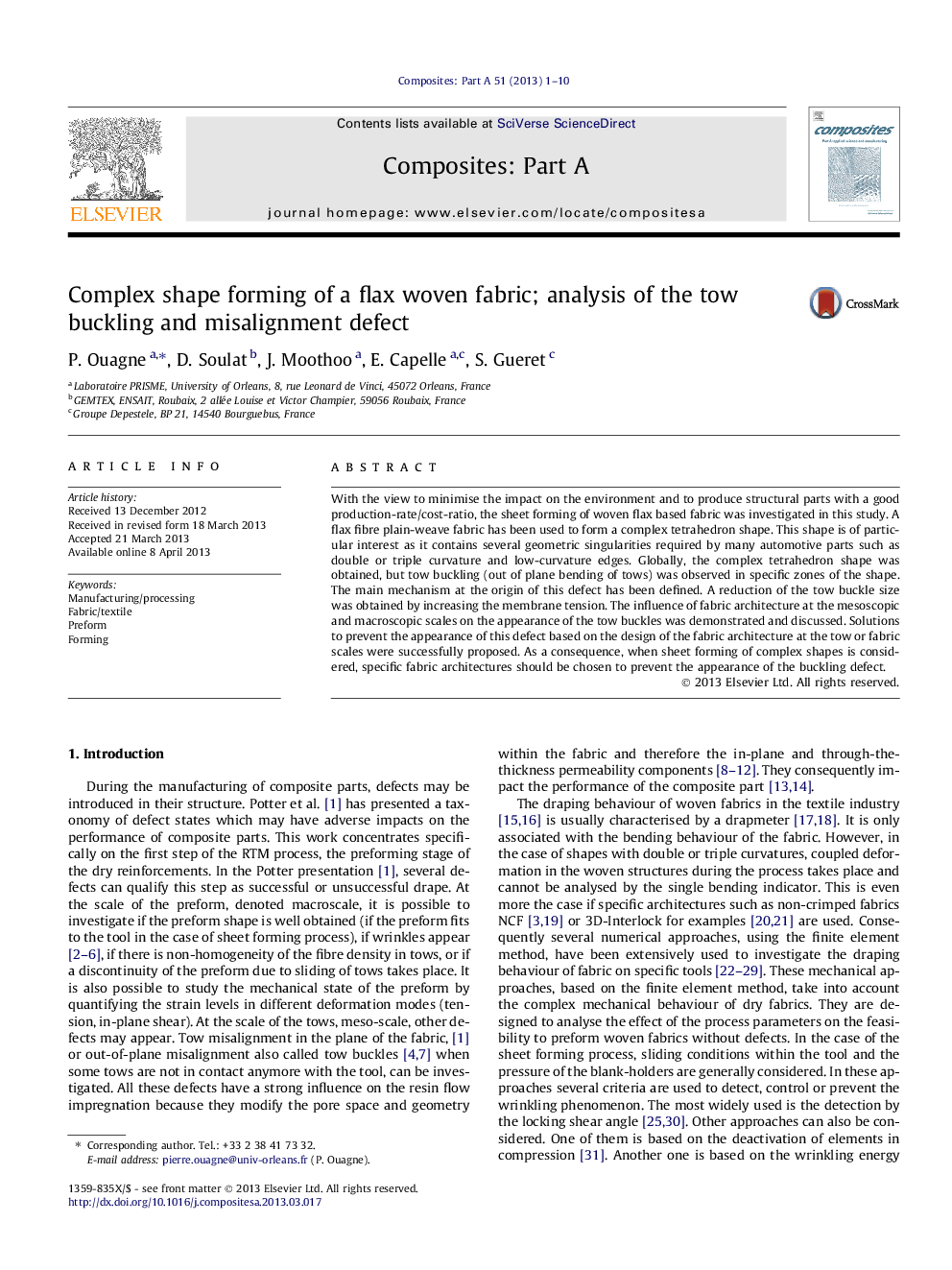| Article ID | Journal | Published Year | Pages | File Type |
|---|---|---|---|---|
| 7892670 | Composites Part A: Applied Science and Manufacturing | 2013 | 10 Pages |
Abstract
With the view to minimise the impact on the environment and to produce structural parts with a good production-rate/cost-ratio, the sheet forming of woven flax based fabric was investigated in this study. A flax fibre plain-weave fabric has been used to form a complex tetrahedron shape. This shape is of particular interest as it contains several geometric singularities required by many automotive parts such as double or triple curvature and low-curvature edges. Globally, the complex tetrahedron shape was obtained, but tow buckling (out of plane bending of tows) was observed in specific zones of the shape. The main mechanism at the origin of this defect has been defined. A reduction of the tow buckle size was obtained by increasing the membrane tension. The influence of fabric architecture at the mesoscopic and macroscopic scales on the appearance of the tow buckles was demonstrated and discussed. Solutions to prevent the appearance of this defect based on the design of the fabric architecture at the tow or fabric scales were successfully proposed. As a consequence, when sheet forming of complex shapes is considered, specific fabric architectures should be chosen to prevent the appearance of the buckling defect.
Related Topics
Physical Sciences and Engineering
Materials Science
Ceramics and Composites
Authors
P. Ouagne, D. Soulat, J. Moothoo, E. Capelle, S. Gueret,
